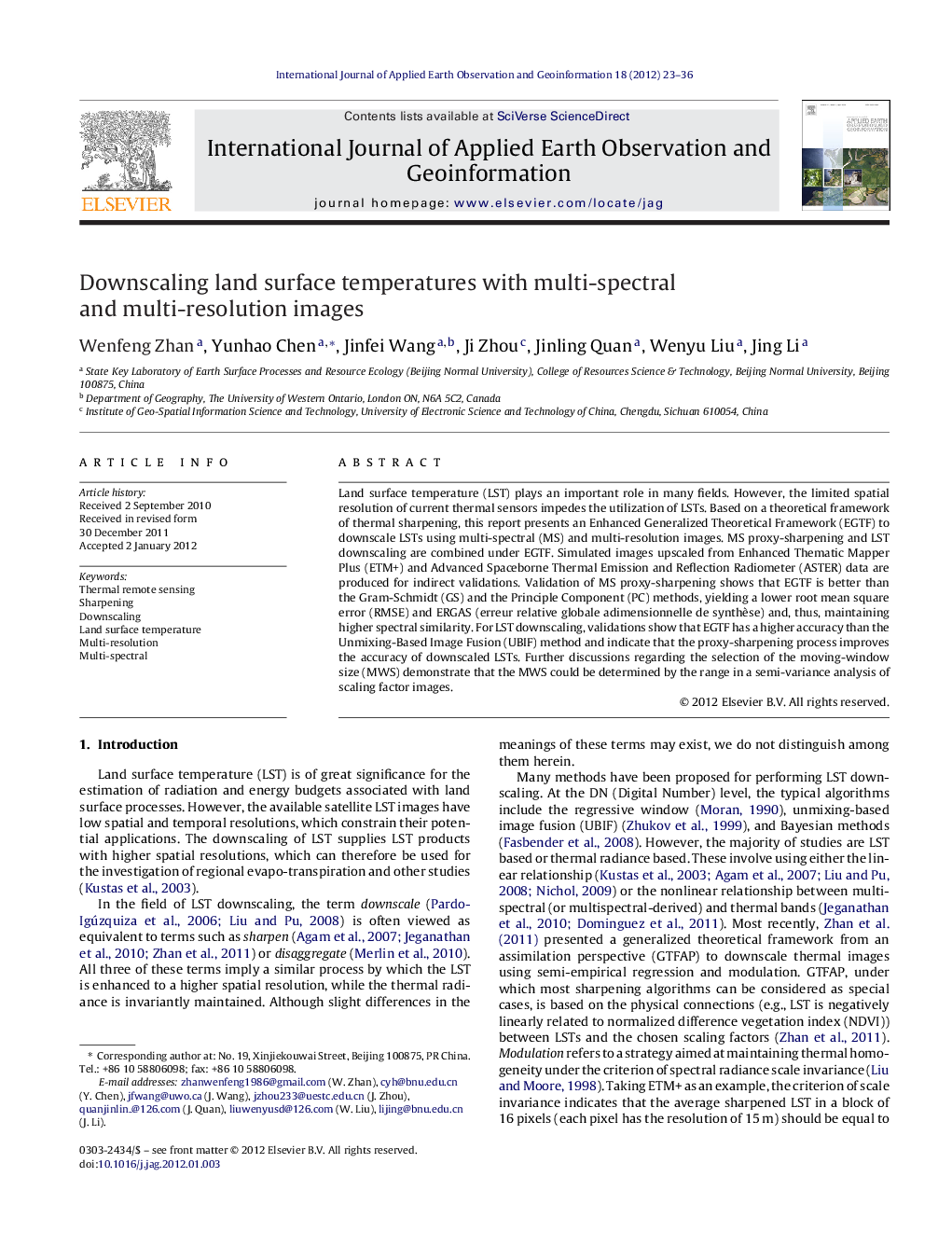| کد مقاله | کد نشریه | سال انتشار | مقاله انگلیسی | نسخه تمام متن |
|---|---|---|---|---|
| 4464908 | 1621842 | 2012 | 14 صفحه PDF | دانلود رایگان |

Land surface temperature (LST) plays an important role in many fields. However, the limited spatial resolution of current thermal sensors impedes the utilization of LSTs. Based on a theoretical framework of thermal sharpening, this report presents an Enhanced Generalized Theoretical Framework (EGTF) to downscale LSTs using multi-spectral (MS) and multi-resolution images. MS proxy-sharpening and LST downscaling are combined under EGTF. Simulated images upscaled from Enhanced Thematic Mapper Plus (ETM+) and Advanced Spaceborne Thermal Emission and Reflection Radiometer (ASTER) data are produced for indirect validations. Validation of MS proxy-sharpening shows that EGTF is better than the Gram-Schmidt (GS) and the Principle Component (PC) methods, yielding a lower root mean square error (RMSE) and ERGAS (erreur relative globale adimensionnelle de synthèse) and, thus, maintaining higher spectral similarity. For LST downscaling, validations show that EGTF has a higher accuracy than the Unmixing-Based Image Fusion (UBIF) method and indicate that the proxy-sharpening process improves the accuracy of downscaled LSTs. Further discussions regarding the selection of the moving-window size (MWS) demonstrate that the MWS could be determined by the range in a semi-variance analysis of scaling factor images.
► An enhanced generalized theoretical framework (EGTF) was proposed to integrate the proxy-sharpening of multi-spectral (MS) bands and the downscaling of land surface temperatures (LSTs).
► The EGTF was found to be effective in downscaling LSTs through MS and multi-resolution bands.
► The moving-window size (MWS) in LST downscaling can be determined by the range in a semi-variance analysis of scaling factor images.
Journal: International Journal of Applied Earth Observation and Geoinformation - Volume 18, August 2012, Pages 23–36